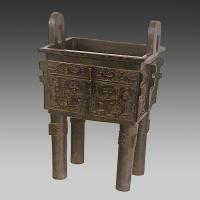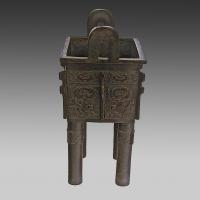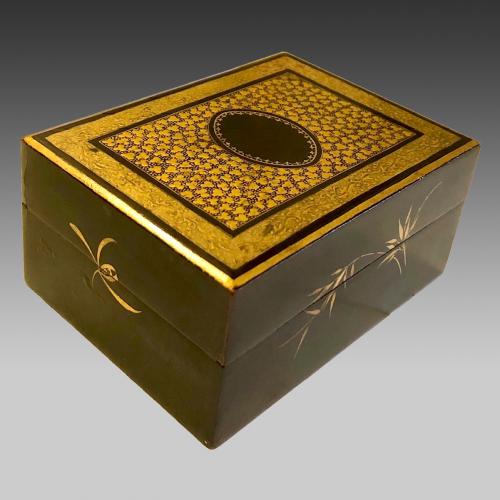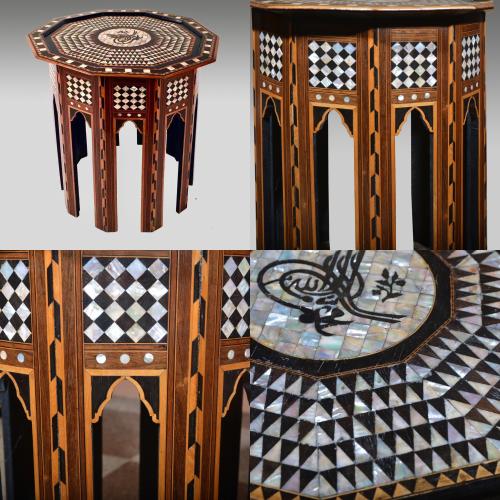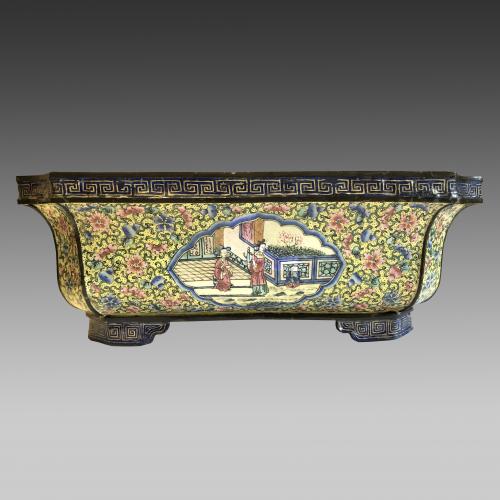
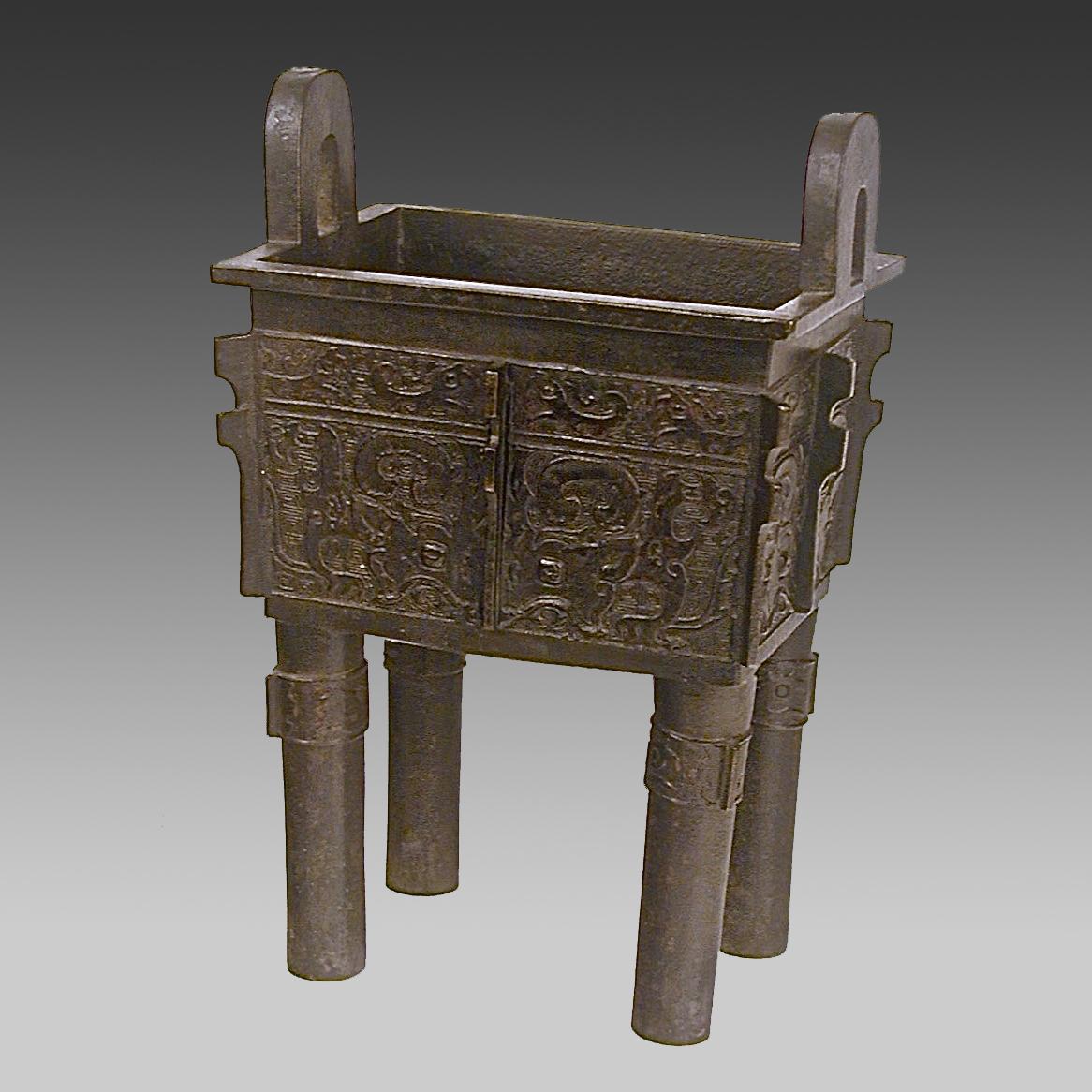
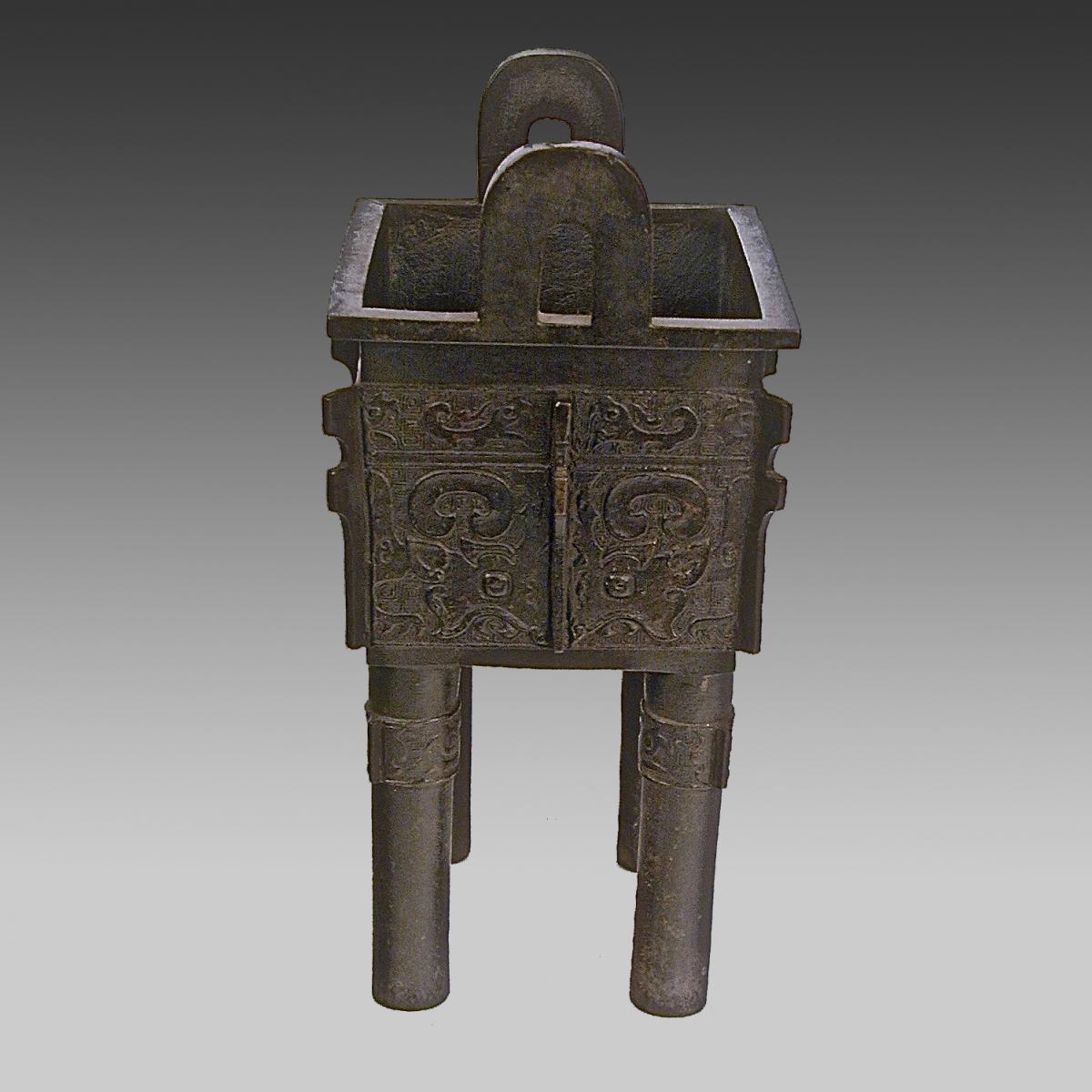
Price
£3950.00This object is eligible for a Certificate of BADA Provenance
The BADA Standard
- Since 1918, BADA has been the leading association for the antiques and fine art trade
- Members are elected for their knowledge, integrity and quality of stock
- Our clients are protected by BADA’s code of conduct
- Our dealers’ membership is reviewed and renewed annually
- Bada.org is a non-profit site: clients deal directly with members and they pay no hidden fees
Chinese bronze fang ding or sacrificial vessel.
Rectangular in shape and upon four cylindrical legs. A loop handle to each end and flanges to each corner and side, the ding is cast in relief on all four sides with a ‘taotie' mask, with a background of ‘leiwen’, the thunder motif depicted by juxtaposed square spirals.
Above each taotie mask there are depicted ‘kui’, a Chinese dragon symbol of good fortune and royalty. A collar to the upper section of each leg decorated with kui and leiwen and with a flange to the outside edge. The fang ding is a sacrifical vessel that is the most highly regarded of all Chinese bronzes.
Chinese, circa 17th/18th century.
Considered in Chinese culture as the the most highly regarded of all Chinese bronzes, the fang ding are ancient rectangular cauldrons standing on four legs and with two facing handles. They were traditionally used for cooking, storing and for ritual offerings to either gods or ancestors in family temple ceremonies.
As their purpose changed from religious to secular in the Zhou dynasty (1046-256BCE), the ding began to represent power and status and the possession of one or more ancient dings is often associated with power and dominion over the land.
An emperor would be entitled to the greatest number of ding and could be buried with nine, whilst a scholar-bureaucrat would be entitled to three or one. In Chinese culture, therefore, the ding is used as an implicit symbolism of power.
These vessels were cast in bronze using the ancient piece mould process, whereby a model of the finished item was made from clay and allowed to harden. Then wet clay was pressed around the dried model and cut away when nearly set, creating a negative.
The original model would then be shaved back to a slightly smaller size and little bronze or copper pieces called chaplets would support it as it was placed inside the hollow negative. Molten bronze would then be poured between the two layers and once the bronze had hardened, the clay could be broken away, leaving a dish intact.
The decoration upon almost all ding is that known as taotie, an image of a symmetrical mask, possibly originally intended to depict ancient face masks that may have been worn by either shamans or god-kings who were considered the link between humans and their deceased ancestors. Chinese myth also portrays the taotie as a mysterious monster.
There is no conclusive evidence about the meaning of the use of this form of decoration, but as it appears almost exclusively on ritualistic bronzes, it can be deduced that there is some ceremonial implication with its use.
The taotie mask is presented with protruding eyes and usually sits on a background of ‘leiwen’, a bed of juxtaposed square spirals known as the thunder design. It is also accompanied by depictions of the ‘kui’ dragon, symbol of good fortune and royalty.
Dimensions
H. 26cm W. 17cm D.12.5cmStock number
1084The BADA Standard
- Since 1918, BADA has been the leading association for the antiques and fine art trade
- Members are elected for their knowledge, integrity and quality of stock
- Our clients are protected by BADA’s code of conduct
- Our dealers’ membership is reviewed and renewed annually
- Bada.org is a non-profit site: clients deal directly with members and they pay no hidden fees


